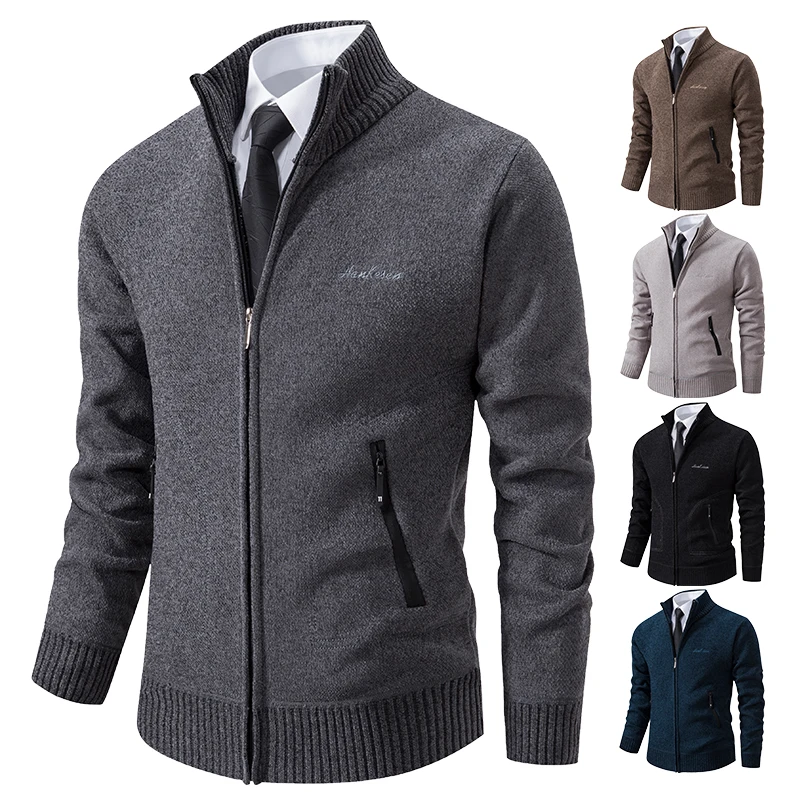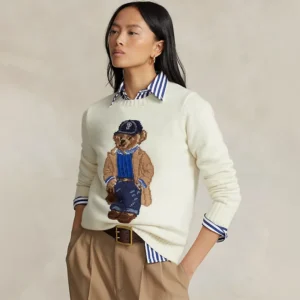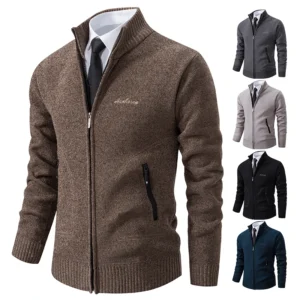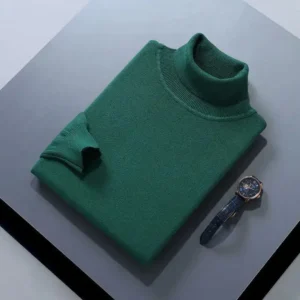Introduction
Cashmere, the epitome of luxury fibers, comes from the soft undercoat of cashmere goats primarily found in the mountainous regions of Asia. What makes true premium cashmere exceptional is its extraordinary fineness and length—Grade A cashmere features fibers under 16 microns in thickness and exceeding 36mm in length, creating unparalleled softness and warmth.
While the quality of cashmere fiber itself is crucial, the knitting technique plays an equally important role in determining how a cashmere garment performs, feels, and lasts. The fundamental distinction between loose knit and tight knit cashmere affects everything from warmth and durability to appearance and value.
Understanding the differences between these two knitting styles helps you make informed decisions when investing in cashmere pieces. The looser the knit, the more relaxed and drapey the garment will be, while tighter knits offer more structure and often greater longevity. Premium cashmere garments undergo rigorous quality control processes, including tests for pilling resistance and colorfastness, to ensure they meet exacting standards.
The styling versatility of cashmere garments depends significantly on the knit type, which influences how the piece can be paired with other clothing and worn for different occasions. Whether you’re considering an everyday staple or a special investment piece, the knit structure will be a defining factor in your experience with the garment.
What Defines Loose Knit vs. Tight Knit Cashmere?
Knit tightness in cashmere is primarily defined by gauge—the number of stitches per inch in a garment. Tight knit cashmere typically features a higher gauge count (12-16 gauge), resulting in more stitches packed into each inch of fabric. This creates a denser, more compact fabric with minimal space between stitches. In contrast, loose knit cashmere has a lower gauge count (7-10 gauge), with fewer stitches per inch and more visible space between them.
The manufacturing process differs significantly between these two styles. Tight knit cashmere requires more precise tension control during knitting and often uses finer yarn. Loose knit pieces allow for greater variation in tension and typically employ thicker yarn or looser machine settings to create the characteristic open structure.
Many cashmere sweaters vary in their knitting density based on their intended purpose and design aesthetic. Understanding these differences helps when selecting garments for specific needs and preferences.
| Characteristic | Tight Knit Cashmere | Loose Knit Cashmere |
|---|---|---|
| Durability | Highly resistant to wear and tear | More susceptible to snags and stretching |
| Warmth/Insulation | Maximum heat retention | Moderate warmth with better breathability |
| Appearance | Smooth, refined, structured | Textured, casual, relaxed |
| Feel/Hand | Firm but supple | Soft, stretchy, flexible |
| Price Range | Typically higher | Often more moderate |
| Typical Lifespan | 10+ years with proper care | 5-8 years with proper care |
| Pilling Tendency | Lower | Higher |
| Care Requirements | Less frequent washing needed | More delicate handling required |
Durability and Structural Integrity
The knitting structure directly impacts how well a cashmere garment maintains its shape and resists damage over time. Tight knit cashmere offers superior structural integrity due to the compact arrangement of fibers, which prevents excessive stretching and helps the garment retain its original shape even after years of wear.
Key durability differences include:
- Tight knit cashmere resists deformation in high-stress areas like elbows and cuffs, maintaining crisp edges and defined shapes.
- Loose knit structures allow more movement between fibers, making them more prone to stretching out of shape, especially when wet.
- Tight knits resist snags and pulls because there’s simply less space for foreign objects to catch on individual loops.
- Loose knits can more easily snag on jewelry, rough surfaces, or even fingernails, leading to visible pulls in the fabric.
The production process for tight knit cashmere typically involves higher yarn tension during knitting, which creates a more stable fabric structure from the start. This is why many premium brands use tighter knits for their classic, long-lasting pieces.
Understanding the differences between brushed and classic cashmere provides additional insight into how various cashmere fabrics perform over time. The brushing process, common in some looser knits, can affect both the feel and durability of the finished garment.
Warmth and Insulation Properties
Cashmere provides exceptional warmth because its fibers create tiny air pockets that trap body heat. The tightness of the knit directly affects this insulating capability. Tight knit cashmere maximizes warmth by creating numerous small air pockets within a denser structure, resulting in superior heat retention.
Loose knit cashmere, while still warm, allows more air circulation through the fabric. This increased breathability makes it less insulating in cold conditions but more comfortable in moderate temperatures or for those who tend to overheat easily.
The practical implications of these differences become apparent in various situations:
- Tight knit cashmere turtlenecks provide exceptional warmth for winter wear, creating an effective barrier against cold air.
- Loose knit pieces work well for layering because they provide warmth without bulkiness and allow better air circulation.
- Tight knit cashmere can be too warm for milder climates or transitional seasons.
- Loose knit styles offer more versatility across temperatures, making them suitable for year-round wear in temperate climates.
The fiber density in tight knit cashmere also provides better protection against wind penetration, further enhancing its insulating properties in outdoor conditions.
Aesthetic Differences: Appearance and Drape
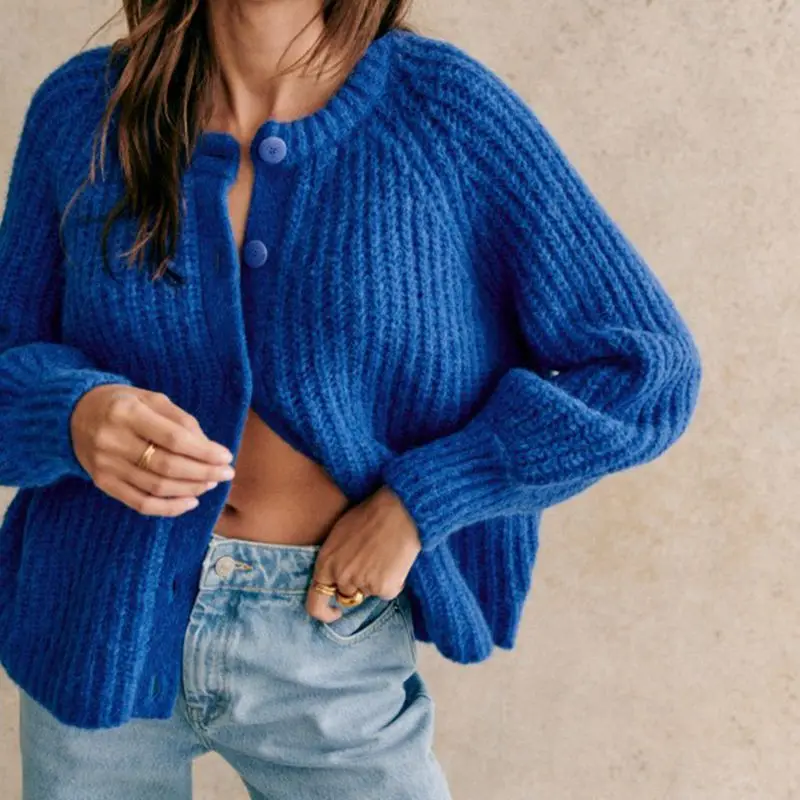
The visual appeal of cashmere garments varies dramatically based on knit tightness. Tight knit cashmere creates a refined, smooth surface that emphasizes clean lines and structured silhouettes. The dense construction allows for precise definition of patterns, cables, and textures, making intricate designs appear crisp and well-defined.
Loose knit cashmere offers a completely different aesthetic with a more relaxed, fluid appearance. The open structure creates visible texture, allowing light to play through the fabric in subtle ways. This creates a casual, effortless look that many find appealing for everyday wear.
Drape—how a fabric hangs from the body—differs significantly between these two styles:
- Tight knit cashmere holds its shape well, creating more structured silhouettes that maintain their form throughout wear.
- Loose knit pieces drape fluidly around the body, creating a relaxed, flowing aesthetic that moves with the wearer.
- Tight knits present colors in a more uniform, saturated way due to the density of the dyed fibers.
- Loose knits can create subtle variation in color appearance as light interacts differently with the more open structure.
The styling options for cashmere cardigans often depend on their knit structure—tight knits pair beautifully with formal attire for a polished look, while loose knits complement casual outfits for a relaxed yet luxurious appearance.
Tactile Experience: How Each Knit Feels
The hand feel—how a fabric feels when touched—varies dramatically between tight and loose knit cashmere. Tight knit cashmere offers a smooth, firm sensation with a dense, substantial feel that communicates quality and precision. The compact fiber arrangement creates a surface that feels substantial and structured while maintaining cashmere’s inherent softness.
Loose knit cashmere provides a completely different tactile experience, feeling lighter, airier, and often even softer to the initial touch. The space between fibers creates a plush, yielding sensation that many find immediately appealing. This open structure allows the fabric to conform more readily to the hand when touched.
Weight perception also differs significantly:
- Tight knit cashmere typically feels heavier and more substantial, giving an impression of luxury through weight and density.
- Loose knit pieces feel lighter and more ethereal, offering comfort through their gentle, barely-there presence.
Brushed cashmere sweaters often feature a slightly looser knit to enhance their characteristic softness, as the brushing process works best when fibers have some freedom to lift from the surface. This creates that distinctively soft, almost fuzzy texture many associate with luxury cashmere.
Interestingly, the tactile experience changes over time—tight knits often become slightly more relaxed with wear while maintaining their structure, while loose knits can become even softer but may lose some definition.
Price and Value Considerations
Tight knit cashmere typically commands higher prices for several compelling reasons. The production process requires more yarn per garment since the stitches are packed more densely, increasing material costs. Additionally, the knitting process for tight knits demands greater precision and often takes longer to complete, adding to labor expenses.
Quality factors that influence pricing include:
- Yarn quantity: Tight knit garments use significantly more cashmere fiber by volume.
- Production time: Creating tight, even stitches requires more time and attention.
- Skill level: Higher-gauge knitting machines and more experienced operators are needed for tight knits.
- Finishing processes: Tight knits often undergo more rigorous finishing to ensure perfect tension.
When considering long-term value, tight knit cashmere often justifies its higher initial price through extended durability and wear life. A well-made tight knit cashmere sweater can remain in excellent condition for many years, potentially making it more economical on a cost-per-wear basis despite the higher upfront investment.
Understanding whether cashmere cardigans are worth the investment requires considering both initial quality indicators and long-term performance expectations. Premium cashmere in a tight knit construction offers exceptional value over time through its resistance to wear and timeless appearance.
Pilling and Maintenance Realities
Pilling—those small, fuzzy balls that form on fabric surfaces—occurs when loose fibers twist together during wear. This natural process affects all cashmere to some degree, but knit structure significantly influences how much pilling occurs and how visible it becomes.
Loose knit cashmere tends to pill more readily because the open structure allows fibers more freedom to move, twist, and form these small balls on the surface. Areas that experience regular friction, such as under the arms and along the sides, are particularly susceptible in loose knit garments.
Tight knit cashmere demonstrates greater resistance to pilling because fibers are held more securely in place. When pills do form on tight knit pieces, they’re often smaller and less noticeable against the smooth background of the fabric.
Maintenance requirements differ between the two types:
- Loose knit cashmere requires more frequent de-pilling with specialized tools or gentle hand removal.
- Tight knit pieces benefit from less frequent but still regular maintenance to maintain their smooth appearance.
- Both types should be given rest days between wears to allow fibers to recover their shape.
Many consumers mistakenly believe that pilling indicates poor quality, but understanding the differences between thick and light cashmere helps clarify that some degree of pilling is natural for all cashmere garments. The key difference is how the knit structure influences the extent and visibility of this natural process.
Beyond the Knit: Understanding Gauge and Ply
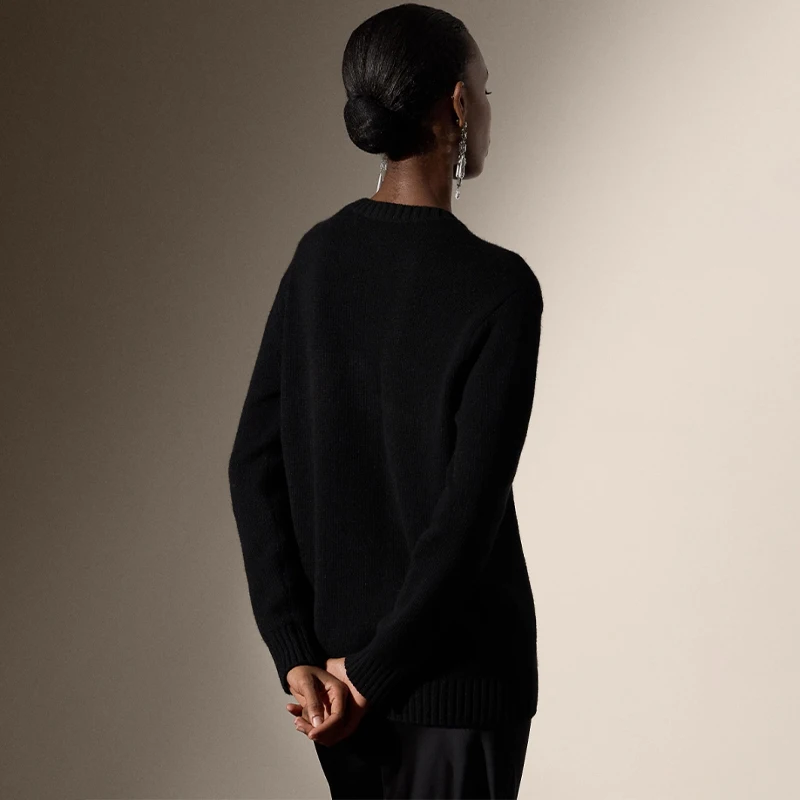
Gauge (expressed as “gg” for gauge number) represents the number of needles per inch on the knitting machine and directly corresponds to how fine or coarse a knit appears. Higher gauge numbers indicate finer, tighter knits—a 16gg cashmere sweater has extremely fine, closely-spaced stitches creating a smooth surface, while a 7gg piece has visibly larger, more open stitches.
Common gauge ranges in cashmere include:
- 3-7gg: Very loose, chunky knits with visible stitch definition
- 8-10gg: Medium knits balancing structure and relaxed appearance
- 12-16gg: Fine, tight knits with smooth, refined appearance
- 18gg+: Ultra-fine knits used for lightweight, delicate pieces
Equally important is ply—the number of yarn strands twisted together to create the thread used in knitting. Single-ply cashmere uses one continuous strand, creating a softer but less durable fabric. Multi-ply cashmere (typically 2-ply or 4-ply) involves multiple strands twisted together, increasing strength and durability.
The differences between 2-ply and 4-ply cashmere are particularly relevant when evaluating quality. Higher ply counts typically indicate greater durability and resilience, especially in tighter knit structures. The interaction between gauge and ply creates distinct fabric characteristics—tight knits with higher ply counts represent the pinnacle of durability and luxury in cashmere garments.
Which Knit is Right for You? Practical Applications
Selecting between loose and tight knit cashmere should align with your lifestyle needs, aesthetic preferences, and practical considerations. Tight knit cashmere excels in professional environments and formal occasions where structure and refined appearance matter. These pieces maintain their shape throughout the day and resist the minor wear that comes from regular movement.
Loose knit cashmere shines in casual, relaxed settings where comfort and drape take precedence over structure. These pieces move with the body and create a softer silhouette, making them ideal for weekend wear or creative environments with flexible dress codes.
Consider these specific applications:
- For office wear: Tight knit sweaters and cardigans maintain a professional appearance throughout long days.
- For loungewear: Loose knit pieces provide maximum comfort while still offering luxury.
- For travel: Tight knit resists wrinkling and maintains shape despite being packed in luggage.
- For layering: Loose knit works well over other garments without adding excessive bulk.
Body type can also influence which knit works best for you. Tight knit cashmere cardigans provide more structure and can create a more defined silhouette, while loose knit pieces offer a relaxed drape that skims the body’s contours gently.
Cashmere Wrap Sweaters, Women's Cashmere Pullovers
$75.89 Select options This product has multiple variants. The options may be chosen on the product pageCashmere Cable Knit Sweaters, Women's Cashmere Pullovers
Price range: $111.82 through $112.93 Select options This product has multiple variants. The options may be chosen on the product pageCropped Cashmere Sweaters, Women's Cashmere Pullovers
$155.77 Select options This product has multiple variants. The options may be chosen on the product page- Price range: $102.02 through $109.37 Select options This product has multiple variants. The options may be chosen on the product page
Oversized Cashmere Sweaters, Plus Size Cashmere Sweaters, Women's V-Neck Cashmere Sweaters
$136.87 Select options This product has multiple variants. The options may be chosen on the product page- Price range: $108.11 through $130.03 Select options This product has multiple variants. The options may be chosen on the product page
Climate considerations matter too—those in colder regions might prioritize the superior insulation of tight knit cashmere, while people in variable or milder climates might prefer the versatility of loose knit pieces.
How to Identify Premium Knit Quality When Shopping
Evaluating cashmere quality requires attention to several key indicators that reveal the true nature of the knit structure. When examining a potential purchase, try these practical assessment techniques:
The Stretch Test: Gently pull the fabric in different directions, observing how it responds. Premium tight knit cashmere will stretch slightly but return promptly to its original shape without distortion. Loose knit should demonstrate more flexibility while still recovering its form.
The Light Test: Hold the garment up to a light source. Quality tight knit cashmere will appear relatively opaque with minimal light penetration, while loose knit will show a more open structure but still maintain even consistency throughout the fabric.
The Density Evaluation: Fold the garment and feel its thickness between your fingers. Quality tight knit cashmere has substantial body without feeling stiff, while premium loose knit has consistent thickness throughout with no irregular thin spots.
Focus on these specific areas when inspecting construction:
- Ribbing at cuffs and hems should maintain even tension without flaring.
- Seams should be flat, neat, and nearly invisible in well-made pieces.
- Pattern alignment at seams indicates careful construction.
- Even coloration throughout suggests quality dyeing processes.
Label information can provide valuable insights, though terminology isn’t standardized across all brands. Look for mentions of gauge number, ply count, and fiber grade when available.
The quality standards for cashmere wool cardigans and other blended pieces follow similar principles, though pure cashmere typically offers the most refined hand feel and performance.
Essential Care Guidelines for All Cashmere
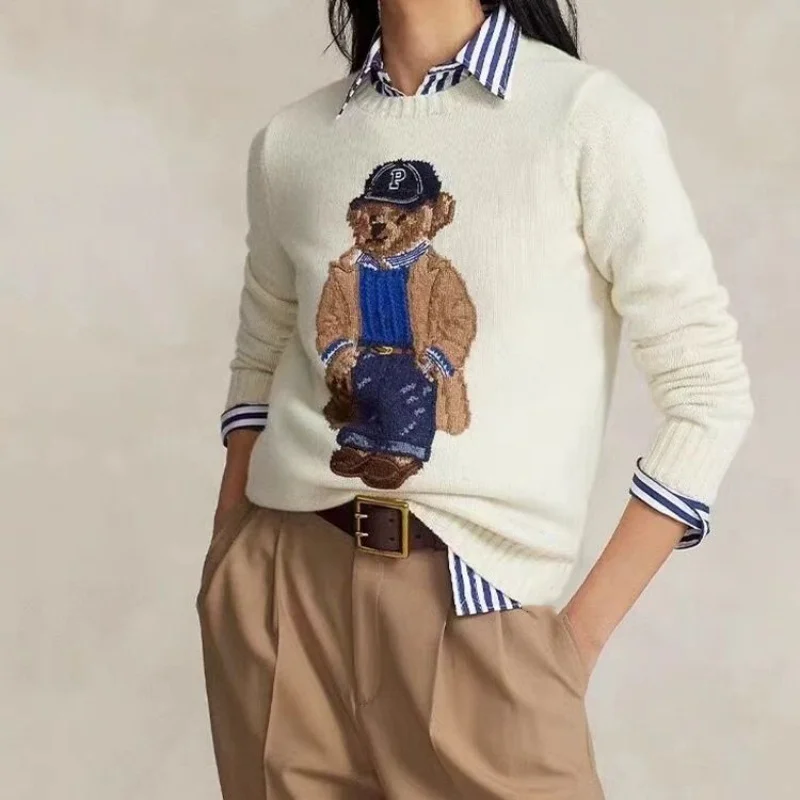
Proper maintenance ensures your cashmere investment retains its luxury and performance regardless of knit type. Washing requires gentle handling for both loose and tight knit cashmere, though loose knit demands extra caution due to its more delicate structure.
For washing all cashmere:
* Use lukewarm water (never hot) and a mild detergent specifically formulated for wool/cashmere.
* Soak the garment for 5-10 minutes without agitation.
* Rinse gently without wringing or twisting.
* Press water out by sandwiching the garment between clean towels.
Drying techniques are crucial for maintaining shape:
* Lay the garment flat on a clean towel away from direct heat or sunlight.
* Gently reshape while damp, paying special attention to the sleeves and hemline.
* Allow complete air drying before folding or hanging.
* Tight knit pieces generally maintain their shape better during drying.
Proper storage techniques for cashmere help prevent damage during off-seasons. Fold cashmere rather than hanging to prevent stretching, and store in breathable cotton bags or containers with cedar blocks to deter moths. For loose knit pieces, take extra care to fold along natural seam lines to prevent distortion.
Managing pilling maintains the garment’s appearance:
* Use a specialized cashmere comb or de-pilling tool with gentle, directional strokes.
* Address pills as they appear rather than waiting for significant accumulation.
* Loose knit requires more frequent but gentler de-pilling than tight knit.
Is Loose or Tight Knit Better for Sustainability?
Sustainability considerations for cashmere extend beyond the raw material to include the longevity of the finished garment. Tight knit cashmere typically offers greater durability and longer useful life, which can make it more sustainable despite using more raw material initially. A well-made tight knit cashmere sweater might remain in active use for a decade or more, reducing the need for frequent replacement.
Loose knit cashmere, while potentially using less material per garment, may have a shorter functional lifespan if it stretches, pills excessively, or develops holes more quickly. However, its lighter weight can reduce resource consumption during production and shipping.
Production considerations also factor into the sustainability equation:
- Tight knit manufacturing generally requires more energy for the knitting machines due to longer production times.
- Loose knit production can be more efficient in terms of machine time and energy consumption.
- Both styles benefit from ethical sourcing practices that ensure humane treatment of cashmere goats and sustainable herding practices.
The most sustainable approach may be choosing high-quality pieces in either knit style that are designed for longevity rather than following fast-fashion trends. Timeless designs that transcend seasonal fluctuations remain wearable year after year, maximizing the value derived from the resources used in their creation.
Frequently Asked Questions
Is tight knit cashmere always better quality than loose knit?
Not necessarily. While tight knit often indicates higher quality due to more material and precise manufacturing, excellent loose knit cashmere also exists. Quality depends on fiber grade, yarn construction, and knitting expertise rather than knit tightness alone. Premium loose knit cashmere made from top-grade fibers can outperform mediocre tight knit pieces made from inferior materials.
Can you tell knit type from photographs when shopping online?
With practice, yes. Look for visible space between stitches (indicating loose knit) versus a smooth, uniform surface (suggesting tight knit). Close-up photos showing stitch definition are most helpful. Product descriptions mentioning “gauge” provide additional clues—higher numbers indicate tighter knits. When exploring cable knit sweaters online, the definition of the pattern often reveals knit density.
Does washing affect knit structure differently for loose vs. tight knit?
Yes. Loose knit cashmere is more susceptible to stretching and shape changes during washing due to its more open structure. Tight knit pieces generally maintain their dimensions better when properly washed, though all cashmere requires gentle handling. Hand washing using the proper technique is recommended for both types to preserve their unique characteristics.
How does weight correspond to knit tightness?
While tight knit cashmere typically weighs more than loose knit of the same size due to higher yarn density, weight alone doesn’t determine knit type. Factors like yarn thickness and ply count also influence garment weight. A heavy loose knit made with thick yarn might outweigh a fine tight knit made with thin yarn, so weight should be considered alongside other quality indicators.
Can cashmere knit tightness be altered after production?
No. The knit structure is permanently established during manufacturing and cannot be fundamentally changed afterward. While blocking (reshaping during washing) can slightly adjust dimensions, it cannot transform a loose knit into a tight knit or vice versa. This underscores the importance of selecting the appropriate knit type when purchasing.

